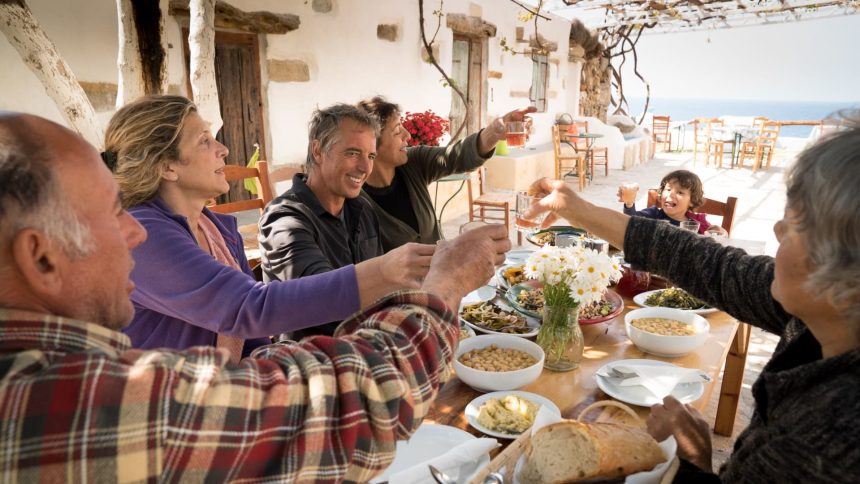When it comes to extending your lifespan, it’s crucial to be cognizant about the foods you put in your body.
Dan Buettner has made it his life’s work to research the world’s longest-living people. The 63-year-old coined the term “blue zones,” which refers to the places around the globe where residents’ lifespans exceed the average life expectancy.
His research covered a variety of factors, including diet. But what does Buettner himself eat after a lifetime of learning about longevity?
“I’ve spent 20 years studying the longest-lived people, and I know what they do as populations to live a long time,” he tells CNBC Make It. “But I’m not one of these obsessed Silicon Valley millionaires who is sacrificing their enjoyment of daily living to see if we can tack some years on the end.”
These are the diet decisions that Buettner, who recently released a line of frozen meals based on popular blue zone recipes, makes every day to stay healthy as he ages.
1. Eating within a 10- to 12-hour window
“I know that the longest-lived people are eating most of their calories in about a 10- or 12-hour window,” Buettner says. “And so I usually have just two meals a day.”
Buettner has his first meal each day around 11 a.m. and his second meal at about 7 p.m.
“Miami nightlife kind of forces me out,” the Florida resident says. “It’s not exactly blue zone that way, so I tend to have breakfast at about 11.”
2. Having beans for breakfast and dinner
From his research, Buettner has learned that people who eat a cup of beans a day tend to live about four years longer than those who don’t.
“I always get my beans and try [to include them in] both meals,” he says. “I start my day with Sardinian minestrone, which has three kinds of beans and about five kinds of vegetables.”
He also adds capsaicin-rich red pepper flakes, which can help to increase metabolism. Buettner tosses in some oregano and rosemary to help lower inflammation and get more antioxidants.
3. Going out to eat often
Though Buettner acknowledges that going out for dinner nearly every night doesn’t align with a longevity diet, it’s a part of his life that he doesn’t feel a need to change.
“It’s hard to eat really healthy when you go out, no matter where you go,” he says. “I try to eat plant-based.”
When looking at a restaurant menu, he tends to gravitate toward the side dishes. A few of his favorite side dishes include:
- Cannellini beans
- Spinach
- Roasted potatoes
He also enjoys going to Indian restaurants where he’s able to find a lot of plant-based options like red or green curry tofu and chickpeas.
“These are as satisfying as eating meat, but without any of the saturated fats,” Buettner says.
4. ‘Don’t eat meat at all’
“I’m about 98% plant based,” he says. “I don’t eat meat at all. And people in blue zones did eat a little bit of meat.”
While the average American eats about 220 pounds of meat per year, blue zone residents only eat around 20 pounds of meat annually. Though he refrains from eating meat himself, Buettner says it’s fine in moderation.
“I think a longevity diet probably has room for meat once a week or so without too much harm,” he says.
Want to make extra money outside of your day job? Sign up for CNBC’s new online course How to Earn Passive Income Online to learn about common passive income streams, tips to get started and real-life success stories. Register today and save 50% with discount code EARLYBIRD.
Plus, sign up for CNBC Make It’s newsletter to get tips and tricks for success at work, with money and in life.
Read the full article here




